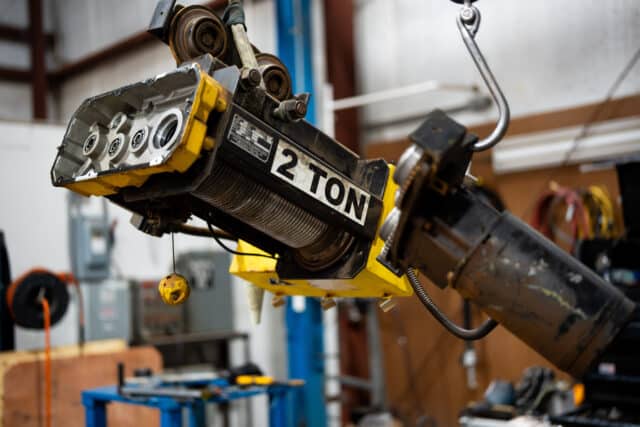Hoists are the driving force behind every lifting operation, whether powered manually, pneumatically, or electrically. They make it possible to raise and position loads safely and efficiently, but like all mechanical equipment, they experience wear over time. Regular inspections (daily, weekly, monthly, and annually) are essential to ensure they remain safe, reliable, and compliant with OSHA and industry standards.
While many issues can be resolved through repairs, there comes a point when replacement is the safer and more cost-effective choice. Here’s how to know when it’s time to replace a hoist instead of repairing it.
Signs a Hoist Should Be Replaced
- Frequent or Recurring Failures – If your hoist operates inconsistently, responds slowly, or requires the same repairs repeatedly, it could be an indicator of a deeper, unresolved issue. Multiple breakdowns in a short period not only disrupt productivity but also raise safety concerns.
- Significant Repair Costs – If the cost to repair a hoist is greater than the cost of a new unit, a replacement should be considered. A newer model can provide greater value through improved safety, greater efficiency, and reduced downtime.
- Discontinued or Unavailable Parts – Since hoists can last a long time if maintained properly, some older hoist models may no longer be supported by the manufacturer, making it difficult to source critical replacement parts. If a part cannot be replaced, the entire hoist must be taken out of service and replaced.
- Substantial Wear, Damage, or Corrosion – Issues such as cracked or crushed chain links, bent or distorted components, or substantial corrosion can compromise a hoist’s strength and structural integrity. If the hoist’s control system, or brain, is damaged beyond repair, it should be replaced immediately.
- Changes in Lifting Requirements – Even if a hoist is in good working condition, changes in production or project requirements may exceed its rated capacity. In these cases, upgrading to a higher-capacity hoist ensures safety and compliance with load-handling regulations.
The Importance of Inspections
Daily visual checks by operators can catch obvious defects, but detailed inspections should be performed by trained service technicians. These are in-depth evaluations that can help identify faults that might not be visible in the field.
If an inspection reveals damage, the hoist must be removed from service until it is either repaired or replaced. Following OSHA guidelines and manufacturer recommendations ensures that all lifting equipment remains safe for operation.

Hoist Safety with Engineered Systems
A well-maintained hoist can provide years of reliable service, but every hoist reaches a point where repairs are no longer practical. Beyond a certain level, replacing a hoist can be the most effective and reliable solution.
At Engineered Systems, our team can evaluate your hoist’s condition, assess repair costs versus replacement benefits, and recommend the most effective path forward.
Contact us today to schedule an inspection or discuss the right hoist solution for your overhead crane system.

